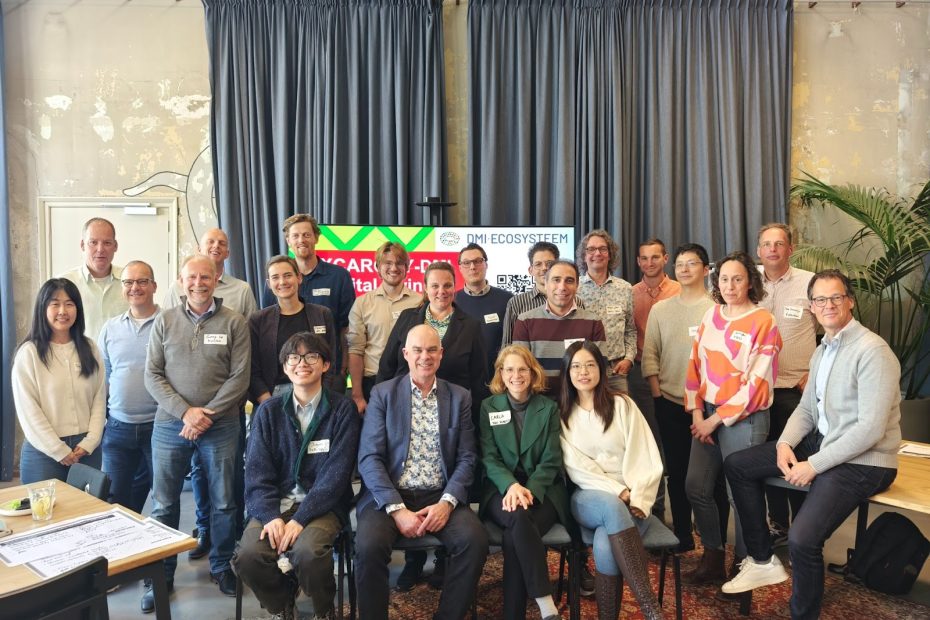By: Carla Robb
On April 10th, we hosted a successful workshop for the XCARCITY and DMI programmes, bringing together experts and stakeholders to discuss innovative solutions for car-low cities and digital twin technologies. The event was a vibrant exchange of ideas, showcasing the synergies between our initiatives and setting the stage for future collaborations.
The workshop began with an opening statement by Bart van Arem from TU Delft and Roy Boertien from I&W. They emphasized the importance of our programmes and the potential overlaps that could drive impactful outcomes. This set a positive tone for the day, highlighting our shared goals and the problems we aim to solve.
Bart van Arem then introduced XCARCITY, delving into the fundamental research. He explained how our scientific outputs translate into societal impacts, aligning with the NWO Impact Plan. This provided a solid foundation for understanding the scope and significance of XCARCITY.
Following this, Roy Boertien presented DMI, focusing on its purpose and the development of car-low cities. He discussed the data-oriented ecosystem that supports this vision, emphasizing how cities can flourish by reducing car dependency. The connection between DMI and car-low cities was made clear, illustrating the transformative potential of our work.
After a brief tea break, Jingjun Li from TU Delft showcased the XCARCITY digital twin federation. This presentation highlighted the innovative use of digital twins to enhance urban planning and policy-making, offering a glimpse into the future of smart cities.Gineke van Putten from Geonovum followed with an overview of digital twinning for DMI. She explained the various aspects and how they contribute to creating sustainable urban environments. This session underscored the importance of digital twins in achieving our policy goals.
Michiel van Dongen from I&W then provided insights into car-low developments and regulations. He discussed policy developments, both past and present, and the regulatory frameworks that guide our efforts. The scientific undertones of these policies were highlighted, adding depth to our understanding of the regulatory landscape.Jyotsna Singh and Sean van der Lee were asked to share the insights from their research.
After a lunch break, Barry Ubbels from Amsterdam introduced the Zuidas use case. He detailed the challenges and solutions for redesigning the area around Zuidas Station, focusing on pedestrianisation and walkability. Barry shared the rationale behind the redesign and the conflicting needs and space considerations, offering practical insights into urban planning.
Bart van Arem then set the stage for the interactive workshop by sharing insights from a survey. Participants engaged in group discussions on how digital twins can help understand the impact of interventions on policy goals.
Each group addressed specific interventions at different scales as follows: Three groups focused on specific intersections within the Amsterdam Zuidas case:
At the Micro Level, Zuidas is eager to explore the interaction between modalities such as public transport, bicycles, pedestrians and cars. Through the workshop we decided to focus on specific locations/intersections like the Parnassusweg. How do we evaluate the flows of pedestrians to support the design decisions in the area?
At the intermediate level, Zuidas is aiming to reduce the impact of cars (including traffic flows and better spatial quality). How do we support Zuidas with insight for strategic decisions based in space and time?
At the Macro level, Zuidas is interested in the behaviour change of citizen. How do we shift behaviour to more sustainable modes of transport and what policy interventions could we include to support this.
The fourth group took an integrative perspective, examining how digital twins could effectively aggregate insights from all three intersections into a cohesive planning strategy.
This interactive session fostered collaboration and creative thinking, generating valuable ideas for future projects. The workshop concluded with each group sharing their findings.
Roy Boertien and Bart van Arem wrapped up the event, summarising the key takeaways and outlining the next steps for both programmes.Overall, the XCARCITY-DMI workshop was a resounding success, bringing together diverse perspectives and fostering a collaborative spirit. A promising direction for collaboration is expected to evolve around the common use cases and demonstrator areas in Almere Pampus, Amsterdam Zuidas and Rotterdam Merwe4Haven while making effective use of resources by partners that participate in XCARCITY as well as DMI Ecosysteem. We look forward to continuing our work and driving impactful change in the realm of car-low cities and digital twin technologies.
Find the report of findings here and the workshop presentation here.
